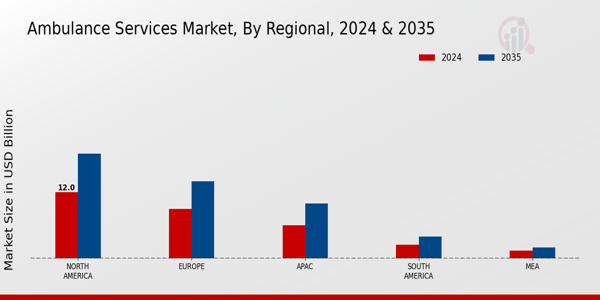The Global Ambulance Services Market is characterized by a diverse range of players who provide critical emergency medical services across various regions. Market dynamics are influenced by factors such as technological advancements, regulatory frameworks, and the increasing demand for timely medical assistance due to rising health concerns and accidents.
Competitors in this landscape must navigate complex requirements, including the need for modernized fleets, skilled personnel, and adherence to strict health and safety regulations. As the market evolves, companies are increasingly focusing on specialized services, such as air ambulance operations and non-emergency medical transport, to differentiate themselves and capture greater market shares.
The landscape is continuously balancing between large-scale service providers and smaller, niche operators, each targeting unique segments of the market while striving to improve patient outcomes. Rural/Metro Corporation is a prominent player in the Global Ambulance Services Market, known for its extensive range of services that cater to urban and rural communities.
The company is recognized for its commitment to high-quality emergency medical services, operating a fleet that is both modern and equipped with advanced medical technologies. One of the key strengths of Rural/Metro Corporation is its strong reputation built on decades of experience, allowing it to maintain customer trust and loyalty.
Additionally, the organization's strategic partnerships with healthcare facilities and local governments enhance its service delivery capabilities, ensuring timely and effective responses to emergencies.
Rural/Metro focuses on enhancing its operational efficiency through the integration of technology, such as telemedicine and real-time tracking of ambulances, which significantly improves patient care and safety. This commitment to innovation and responsiveness to community needs positions Rural/Metro Corporation favorably within the competitive landscape of the ambulatory services sector.
Priority Ambulance is a significant entity in the Global Ambulance Services Market, distinguished by its focus on providing quality emergency medical services across multiple regions. The company prides itself on delivering prompt and professional care, often surpassing industry standards.
One of its core strengths lies in its dedication to operational excellence, ensuring that all aspects of service, from dispatch to patient care, are performed with the highest level of efficiency. Priority Ambulance continually invests in its workforce, providing regular training and development programs that equip paramedics and emergency medical technicians with the latest skills and knowledge.
Furthermore, the company's commitment to community engagement and feedback reflects its responsive approach to service delivery, allowing it to adapt and evolve in accordance with client needs.
By leveraging modern technology and fostering a robust organizational culture, Priority Ambulance is well-positioned to compete effectively within the ambulance services market, aiming to achieve optimal outcomes for patients and communities alike.
























Leave a Comment